In this article, we will be checking out the super neat and feature packed Raspberry Pi 5 case the Pironman 5.
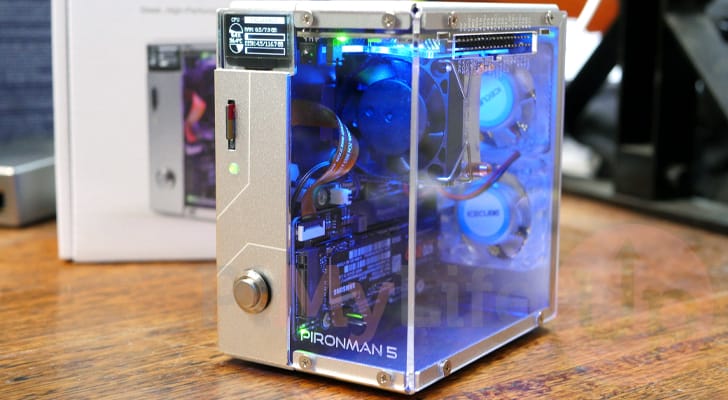
The Pironman 5 is SunFounder’s latest case and, in our opinion, one of the best cases around. It is the successor to their older Pironman case and brings with it improvements to functionality, buildability, and style.
This new case variant keeps the same style that made it stand out from many other Raspberry Pi cases but improves on it drastically. It is very much reminiscent of PC cases but at a significantly reduced size. All of the important IO outside of the micro-SD card has been moved to the back of the case, so you don’t have to worry about cables coming out the side. This allows you to neatly route cables to this case without ruining its looks.
Packed within this Raspberry Pi case, you will find a physical power button, an NVME M.2 HAT (Thanks to the Pi 5, this is usable with NVME drives and not the older SATA standard, a battery to power the RTC clock on the Pi 5, an IR sensor, heatsink, fans, and even a GPIO extender so you don’t lose access to the GPIO pins. This case even includes a little OLED screen that gives you a quick overview of your Pi, including the temperature, IP address, and CPU and RAM usage.
One of our biggest complaints about the original Pironman case is that it was quite tricky to put together. There were a ton of parts that had to be assembled, and it was quite a time-consuming process. The Pironman 5 improves on this quite significantly. While there are still a few steps, the amount of work has been cut down drastically.
On top of being significantly more straightforward to put together, the extra functionality is easier to use and access. SunFounder has even reworked their HAT so you do not lose access to any of the USB slots; you retain full access to all four USB slots. They even improve on one annoying thing about the Raspberry Pi 5 by converting the mini-HDMI ports to full-sized HDMI, using its increased footprint to improve the Pi.
In the following sections, we will explore our thoughts on the Pironman 5 case, including its overall features and the unboxing and building experience.
Please note that SunFounder sent us the Pironman 5 case to review; however, they didn’t set any expectations for what we could or couldn’t say about the case. All of the opinions written in this article are our own.
Equipment
Below is a list of the equipment we used to put together and set up the Pironman 5 case.
Recommended
- Raspberry Pi Amazon 5
- Micro SD Card Amazon
- Power Supply Amazon
- SunFounder Pironman 5 Case SunFounder
- Ethernet Cable Amazon or Wi-Fi Amazon
Optional
We tested this case with a Raspberry Pi 5 running the latest version of Raspberry Pi OS Bookworm 64-bit.
Unboxing and Building Experience of the Pironman 5 Case
Let us begin this article by exploring our general thoughts on unboxing and building the Pironman 5 case.
If you have ever used the original case, this whole experience will significantly improve. This is due to the reduction in the number of parts and the better placement of the various components.
Unboxing the Pironman 5
Like all SunFounder products we have reviewed over the years, this one has been packed very well. It comes in a sturdy cardboard box, and all of the parts are kept within a nice thick bit of foam.
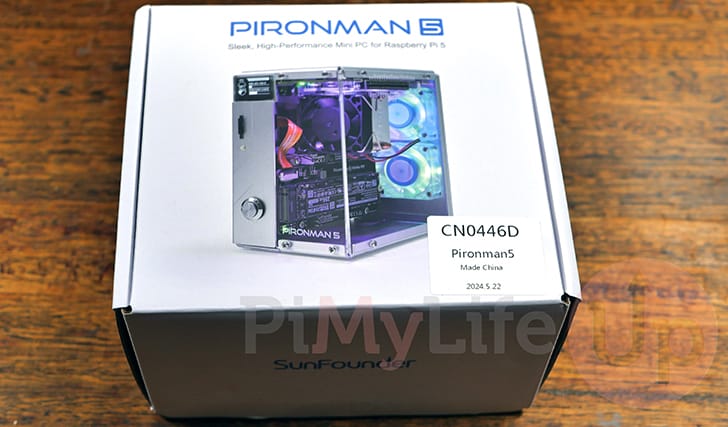
At least, based on our experience with the packaging, the chances of something coming damaged are very slim. Ours was shipped from China all the way to Tasmania, Australia, and there was no notable damage to any of the parts or even the box.
Unpacking everything, you will find all of the various parts packed into these small packages. It is almost a little impressive how they fit everything cleanly in this box. While the metal outer shell comes in one single piece, you will need to actually take it apart when you put the case together.
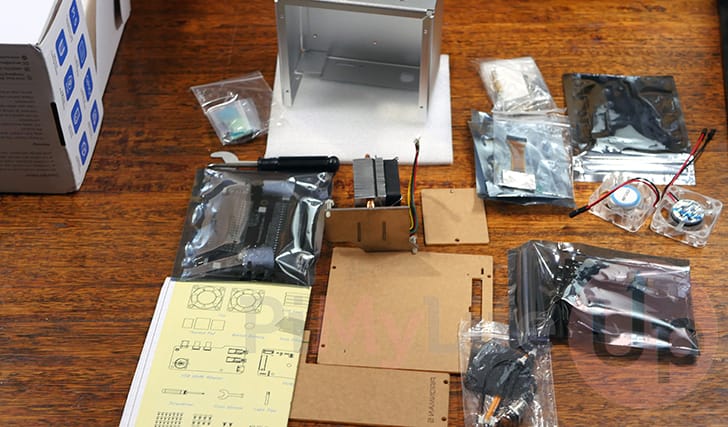
This bundle of parts also includes the brains of the Pironman 5 case, the Pironman 5 IO HAT, the USB HDMI adapter, and the NVME PIP.
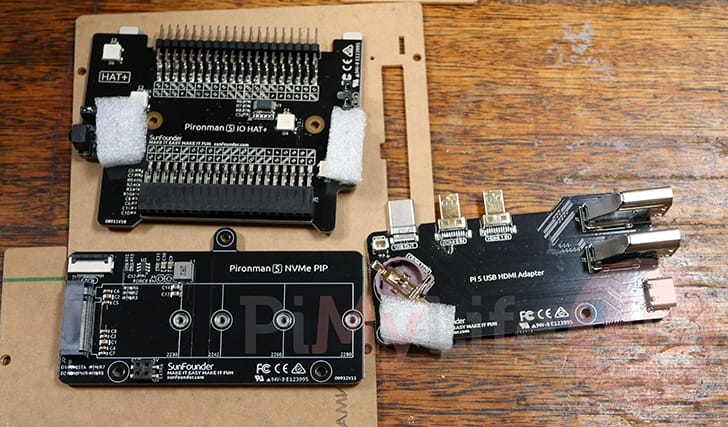
Along with the rest of your parts, you will find the next most important part of this case: the instruction sheet. This sheet is a clear set of instructions that show you how you can
The only thing missing from these instructions is the installation of the software required to drive the included OLED screen. You will need to head to the official website to get these instructions.
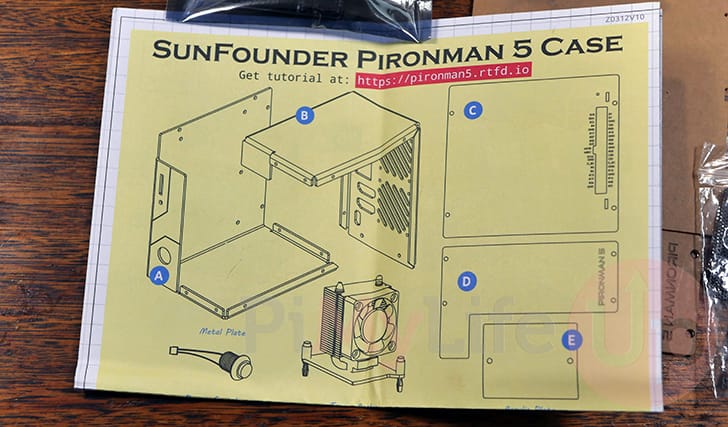
Putting the Pironman 5 Together
I feel like the SunFounder team listened to some of our feedback in our previous guide, especially regarding the case’s buildability.
With the original Pironman case, the metal shroud came in four separate pieces and required mounting to two different bits of acrylic. The Pironman 5 significantly improves this entire process by making it just two metal pieces that easily lock together without you having to contend with multiple pieces simultaneously.
Additionally, the two acrylic pieces in this case aren’t integral to everything holding together, making it a much nicer case for your Raspberry Pi 5.
Another area in which the SunFoudner team made significant improvements is the cooler. We had troubles with the original design, as it was somewhat unclear how everything fit together. The new one is easier to use and provides coverage for more components.
Overall, we found the Pironman 5 to be a somewhat pleasant building experience. There was no point where we felt the included instructions were unclear or where the case felt frustrating to put together.
In fact, we accidentally put a dead Pi 5 into the case originally. Thanks to the well-thought-out design of the case and its components, we were able to take apart and put the entire case back together without needing the instructions.
The only lesson learned here is to test your Raspberry Pi before you install it into the Pironman 5. You will need to completely disassemble the case to remove the Pi, which isn’t a negative thing about the case as you should never really need to physically access the Pi itself once installed.
Please note that after you have assembled the case, you will need to install some additional packages and run a Python script. These scripts drive the Pironman 5 case’s OLED screen and control its RGB lights and fans.
General Thoughts on the Raspberry Pi 5 Pironman 5 Case
With the Pironman 5 Case now assembled, let us share some of our general thoughts on it and its overall usability.
This case is one of the most feature-packed that you can currently get; it is also one of the most well-thought-out and put-together. In most cases, you have to deal with a level of sacrifice, but in this case, SunFounder has covered almost all bases. The only part where you might have issues is if you want to use a component like the Pi camera.
NVME HAT
One key new feature of the Raspberry Pi 5 is that it exposes a small 4-lane PCIE slot. The SunFounder team was quick to exploit this by including an NVME HAT with the Pironman 5 case.
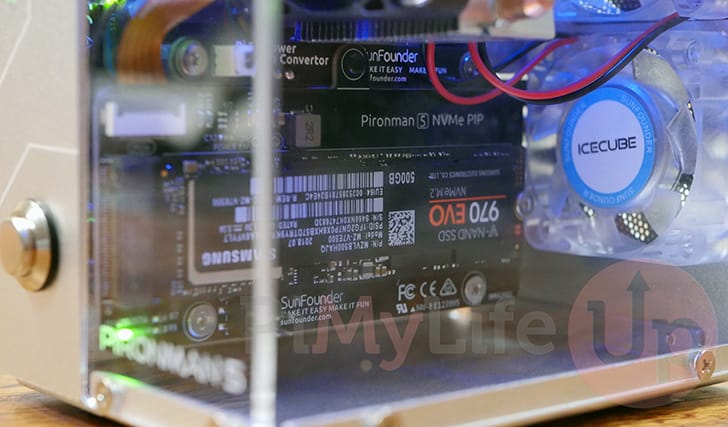
With this hat, you can use any NVME drive up to the M.2 2280 size with your Raspberry Pi. This allows you to add significant extra space to your Pi, and you can even run your Pi off of it if you choose.
Once your case is fully put together, this NVME hat is still easily accessible if you ever need to replace the drive. All you need to do is remove the four screws holding on the acyclic plate, and then you can do whatever you need to.
OLED Screen
A feature we really liked from the original Pironman case was the little OLED screen, which has been carried over to the Pironman 5. This little screen gives you a quick overview of your Pi without needing to access the device, whether through the desktop interface, SSH, or Raspberry Pi Connect.
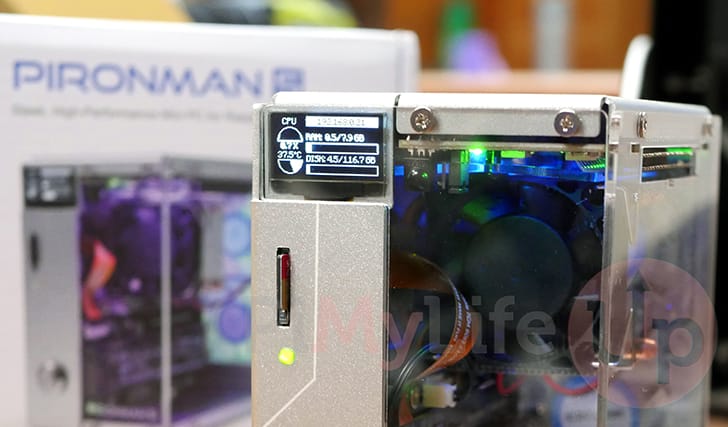
You can see your Pi’s temperature, RAM and CPU usage, and even its IP address at a glance. Seeing the IP address at a glance can be super useful if you are running your Raspberry Pi headless.
The biggest improvement with this screen is simply its placement on the case. The original had this placed front and center, but the new version of the case has it placed in the top-left corner. This looks nicer and is easier to read at a quick glance.
Accessible GPIO Pins
The Pironman 5 is really trying hard to be the best Raspberry Pi 5 case you can buy. One obvious reason for this is how hard the SunFounder team has thought to ensure that you can still access the vast majority of your Raspberry Pi’s functionality.
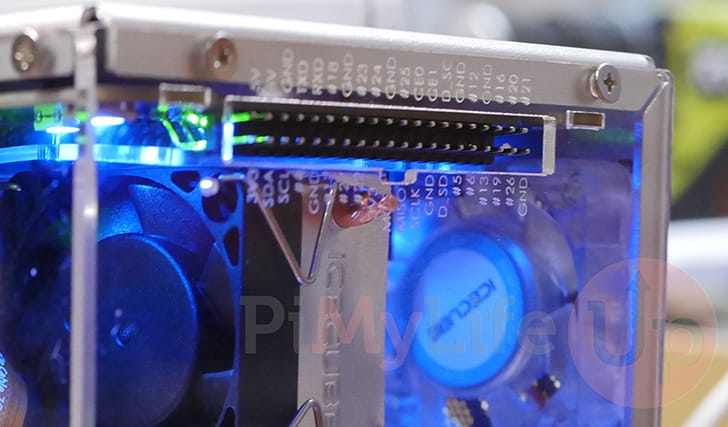
In many other cases, you will lose all access to the GPIO pins as they are often covered and made inaccessible. The Pironman 5 fixes this by including a header extender that exposes the pins to the outside of your case.
Full Access to the Raspberry Pi’s USB Ports
Another area where the Pironman 5 drastically improves over its predecessor is access to the Raspberry Pi’s IO. With the older case, you instantly lost one of the USB ports, which was required to interact with the SSD module.
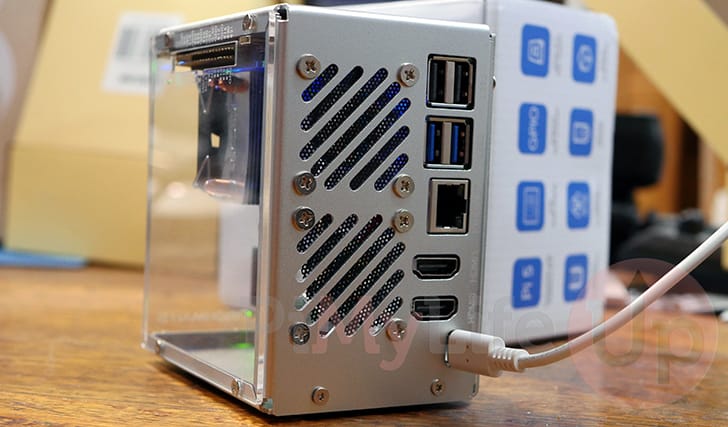
In addition, this case converts the mini-HDMI ports on your Pi 5 to full-sized ones. This makes your Pi significantly easier to use, as you are more likely to have a full-sized HDMI cable.
Style and Part Placement
In our opinion, the Pironman 5 is one of the nicest-looking Raspberry Pi 5 cases that you can buy. It packs a lot of functionality in a small space and keeps everything easily accessible,
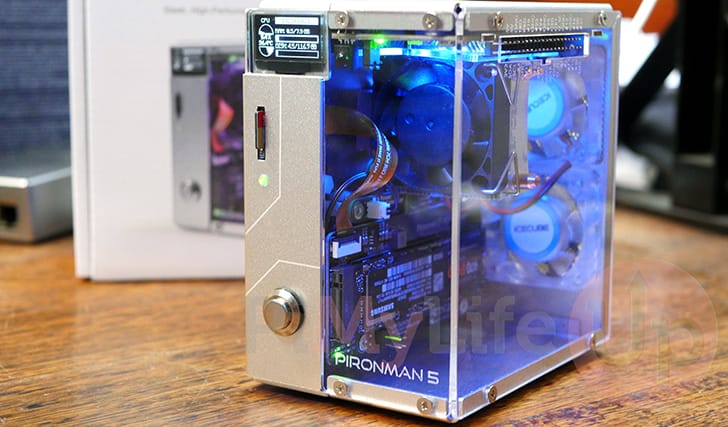
The featured RGB lights help light up your Pi and help display all of the internals. Unlike the original Pironman, these lights are actually smartly integrated into the topmost HAT. This is a significant improvement over the original case’s LED strip and saves the hassle of trying to stick the strip in a place where it isn’t super obvious.
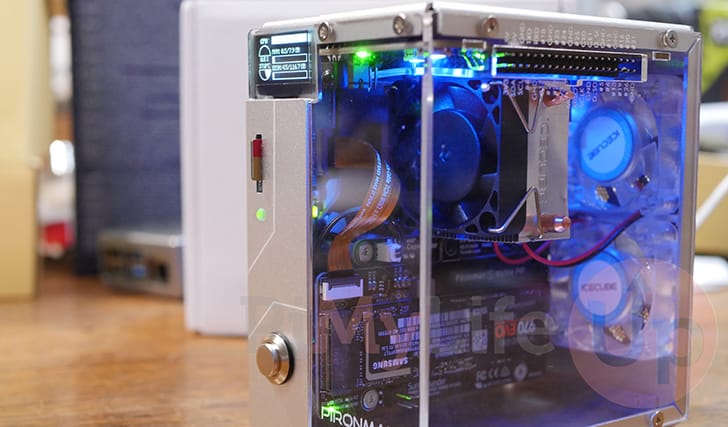
SunFounder chose to use acrylic on both the front and side of the case, which gives you a good shot of all the internals, including your Raspberry Pi. The metal cleanly hides the uglier parts of the hardware and provides plenty of rigidity.
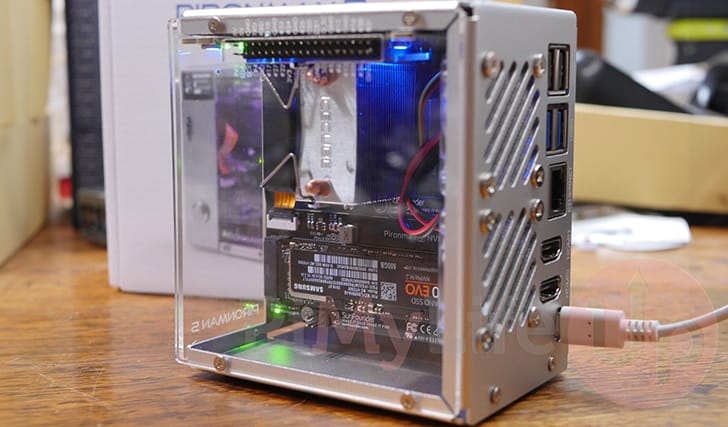
Conclusion
In conclusion, the Pironman 5 is one of the nicest cases for your Raspberry Pi 5. SunFounder really exceeded our expectations with both the case’s look and style and its functionality.
If you intend on using your Pi as a desktop or even as a headless client, you will find this case super great. When used headless, you can use the provided OLED to quickly see the IP address that has been assigned to your Pi.
This case saw many improvements over its predecessors in almost every key place we had issues with originally.
If you have any questions about the Pironman 5 case and want anymore of our thoughts, please feel free to leave a comment below.
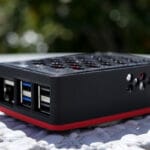
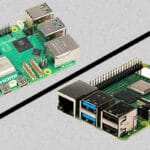


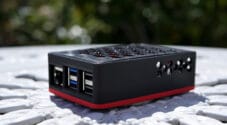
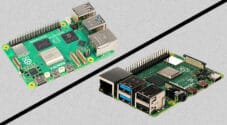
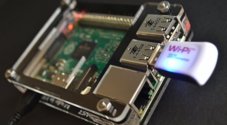



I love this case, I have a Samsung 250Gb 970 EVP Plus SSD installed and running my Home Assistant program. The OLED is cool and with the Pironman Addon in HA you can fully configure the LED’s for a very cool looking case. The cooling fans are Very rarely on as the Ice Cooler does a great job on it’s own and my Pi5 is running at about 36°C
It’s a centerpiece on my entertainment cabinet and very happy with the result.
Does the oled risk any burn in?
Hi Chris,
With OLED I think burn in / burn out is always going to be somewhat of a risk just due to the underlying technology.
I have left the case all set up and plugged in since we checked it out and we have yet to see any issues with it.
Kind regards,
Emmet